Lawyers: Making Your LinkedIn Profile Work for You
/Here are 6 tips to help attorneys optimize their LinkedIn Profile
With over 500 million members worldwide, LinkedIn is the world’s largest professional social network and according to the American Bar Association’s 2016 Legal Technology Survey Report, the most popular social network among lawyers.
While initially designed to help professionals network and generate connections with other like-minded professionals, LinkedIn has evolved into so much more than that. In addition to helping people build their network, it is even more commonly used as a job search platform.
In today’s job market, your LinkedIn profile is considered a digital resume, enabling you to publish extended content about your professional background and accomplishments. It is your brand, and oftentimes, people’s first impression of you.
What does this mean for lawyers looking for new career opportunities? For one thing, it means that a LinkedIn profile is no longer really an option. It is a necessity. Second, merely having a presence on the platform is not enough. As a matter of fact, applicants that have a robust LinkedIn profile are 71 percent more likely to get interviews than those who don’t have a profile at all.
So, how do you create a strong LinkedIn profile? How do you ensure that executive search consultants not only find you, but reach out to you?
Here are 6 ways to create a powerful profile on LinkedIn:
1. Include profile and background pictures
Think of your profile picture as your first opportunity to make a strong, visual first impression; a way of presenting yourself as an actual, real-life person instead of just an online persona. A photo invites engagement, and those who include one get 21 times more profile views than those who don’t. This is not the place to include a picture of your family or to crop yourself out of a group shot. Your profile picture should be a high-quality and recent professional headshot that showcases you as friendly and interview-ready.
Your background photo is displayed in a highly visible location and almost as important as your profile picture. It can be a photograph or another image but whatever you choose, make sure it is something that visually relays your professional brand.
2. Headline
Your headline is displayed directly below your name and it’s arguably one of the most important components to your LinkedIn profile. Its sole job is to help the reader decide whether to read on or move on. In 120 characters or less, your headline needs to be a solid statement about who you are.
Forbes recommends using the following formula for crafting your headline:
“Job title/company + keywords + Zing!”
In other words, always include your job title and current company, add a few keywords specific to your practice area that people would use during their search, and include something about the unique value that you offer.
3. Summary
Your LinkedIn Summary is where you can describe your professional skills, law experience, and qualifications. When done right, it shows relevance, differentiates you among a crowd, and entices people to want to learn more about you. Consider it a cover letter for the rest of your profile.
You have 2,000 characters to describe what you do, your achievements and awards, and any special interests. It should be conversational but leave the superlatives out. Instead, focus on relaying your impressive output and the tangible results you’ve achieved.
4. Complete your profile
After you’ve added your profile, background pictures, headline, and summary, it’s time to make sure that the rest of your profile is complete. This is your chance to include your work experience. Probably the most important area of your profile, do not simply list your employer and title. Prospective employers need to know what you did at each job. For example, be sure to include your area of expertise, accomplishments, and any management experience. If you received any recognition or awards for a particular role, be sure to include those too. Also, show your promotions.
Use the feature called “add a section to your profile” to your advantage. This is where you’ll find suggested categories that could help to improve and enhance your profile like certifications, organizations, associations, publications, speaking engagements, volunteer experience, courses, patents, and more.
You’ll also want to make sure that your “Skills” section accurately reflects your areas of expertise. Recruiters and executive search consultants search using keywords and listing your Skills is a great way to make sure you don’t go unnoticed.
5. Recommendations and Endorsements
Word of mouth speaks volumes which is why it’s so impactful when past clients, employees, and peers personally vouch for you via LinkedIn Recommendations. Don’t be afraid to reach out to your network and request a recommendation. It’s commonplace and also widely appreciated when you offer to reciprocate this gesture.
Endorsements are also important, but less weighted and time-consuming than a recommendation. This is where your network can give a virtual thumbs up to the various skills you’ve listed in your profile.
6. Customize your URL
To make it easier to find and remember you, customize your LinkedIn URL. To do this, click the edit button to the right of your URL (just below your photo) and follow the instructions.
It should be www.linkedin.com/in/[YOUR FIRST AND LAST NAME]
LinkedIn is a powerful instrument for both passive and active job searchers, so it’s important to be thorough and strategic when completing each section of your profile. When leveraged correctly, it can greatly enhance your visibility and attract the right professional opportunities.
Carrington Legal Search is devoted to finding the ideal candidates for our clients’ recruitment needs. To make our nationwide network work for you, get in touch at 512-627-7467 or email carrie@carringtonlegal.com

